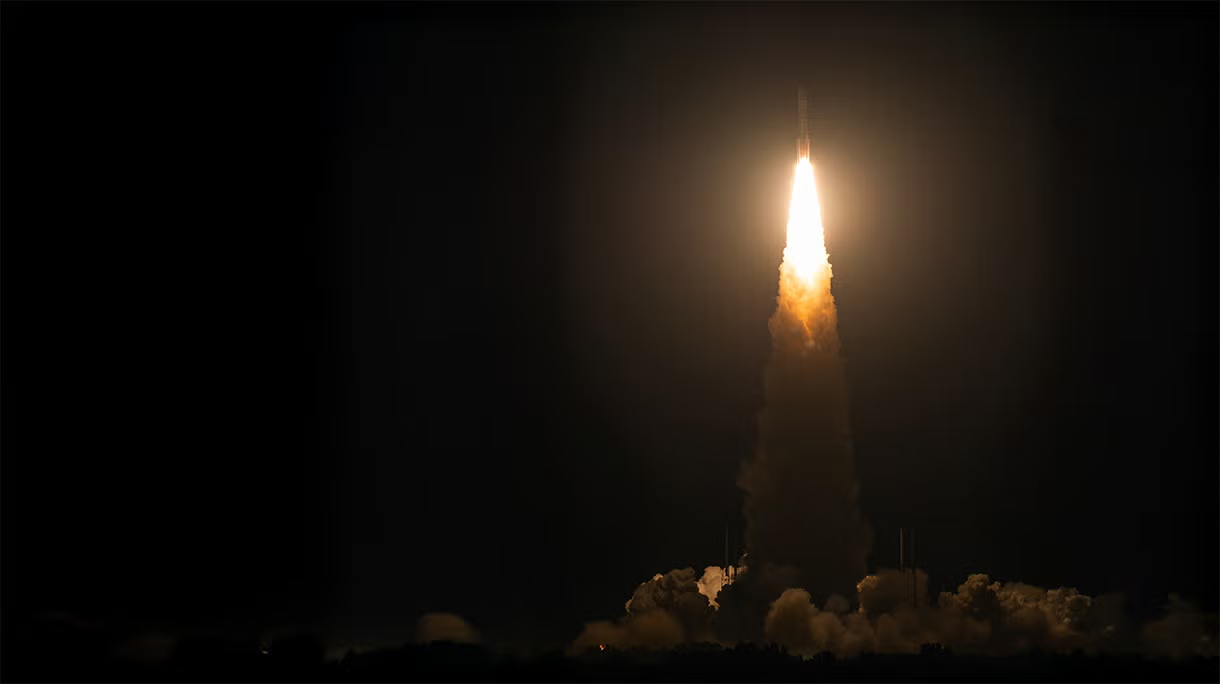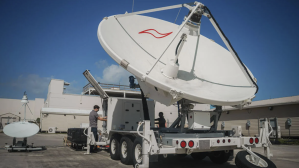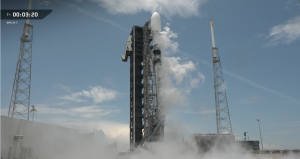After delays, Space Force launches testbed satellite for experimental PNT capabilities

The Space Force has deployed a satellite designed to demonstrate experimental position, navigation and timing technologies — marking the first successful liftoff for United Launch Alliance’s Vulcan rocket under the National Security Space Launch program.
The Navigation Technology Satellite-3 (NST-3) payload was hoisted Tuesday night from Cape Canaveral Space Force Station, Florida, into geosynchronous orbit, where it will spend the next year conducting about 100 different experiments.
Developed by the Air Force Research Laboratory (AFRL) as one of its Vanguard programs and built by L3Harris, NTS-3 was initially slated for liftoff in 2022 but had been grounded due to delays in getting the Vulcan-Centaur rocket certified for the NSSL program.
“NTS-3 is the DOD’s first experimental navigation satellite in 48 years. The last one was NTS-2 in 1977. So at the lab, we think that we are overdue for an experiment in this area,” Joanna Hicks, senior research aerospace engineer at AFRL’s space vehicles directorate, told reporters Monday ahead of launch.
The satellite will conduct a range of on-orbit PNT experiments to test capabilities that could be applied to the Space Force’s GPS IIIF satellites that will soon hit initial production, as well as other emerging technologies that are in nascent stages of development, Hicks said.
NTS-3 will be the first U.S. satellite navigation system to integrate an electronically steered phased-array antenna, Andrew Builta, vice president of business development and program management excellence at L3Harris Space and Airborne Systems, said during Monday’s roundtable. The antenna can direct signals to specific regions without physically moving the satellite, and will “focus powerful beams to ground forces in combat jamming environments,” Builta said.
The testbed sat will also experiment with an on-orbit reprogrammable architecture, which will allow the Pentagon to update the system with new navigation technologies and ensure its GPS satellites can respond to new threats.
“We don’t have to have everything planned out before we go on orbit and before we see what the threats are,” Hicks said. “And this is not just on the satellite side. We’re pairing that with reprogrammable user equipment that’s able to receive new signals that we’ve defined, even after launch.”
Other NTS-3 experiments will focus on advanced anti-spoofing signals such as CHIMERA, which will protect civil GPS users from interference, advanced algorithms to improve timekeeping and extended autonomous operations without ground contact.
Because NTS-3 is stationed in GEO, the lab will have the opportunity to explore the functionality of multi-orbit PNT constellations, Hicks noted. The Pentagon’s GPS satellites are currently located in medium-Earth orbit, but launching future payloads into other orbits like the high-altitude geosynchronous or low-Earth orbit — where the Space Development Agency’s PNT constellation is planned for — could offer augmented capabilities.
“So we can receive signals from NTS-3 at GEO, as well as GPS at MEO and take advantage of all of them,” Hicks said. “Maybe in the future, we’ll be able to put some of those technologies in LEO, for example. We don’t currently have that as a planned mission, but that’s something that could conceivably happen in the future.”
While Tuesday night’s mission was a significant step for the Pentagon’s work on PNT modernization, the launch was a milestone for ULA as it marked the first time a military satellite was put into orbit by the company’s Vulcan-Centaur heavy-lifter rocket. The vehicle was finally certified to carry national security payloads to space in March, ending years of development hurdles that stalled certification and, in turn, delayed launch of NTS-3.
“This is an important milestone for the Space Force and all involved,” Col. Jim Horne, mission director for Tuesday night’s launch, said in a statement. “After years of development, technical collaboration, and dedication by all involved, including our government mission partners and the entire ULA team, I’m proud to say the first Vulcan NSSL mission delivered its payloads safely into space.”
Despite the yearslong delay in putting NTS-3 on orbit, Hicks noted that AFRL was able to use that time to continue testing the payload and add new capabilities for upcoming experiments.
“We’ve had the time, and the team has been able to collect a lot more data on the ground than we originally anticipated,” she said. “So we’ve really been able to take advantage of that and make sure that we are ready for the best possible external mission on orbit.”






